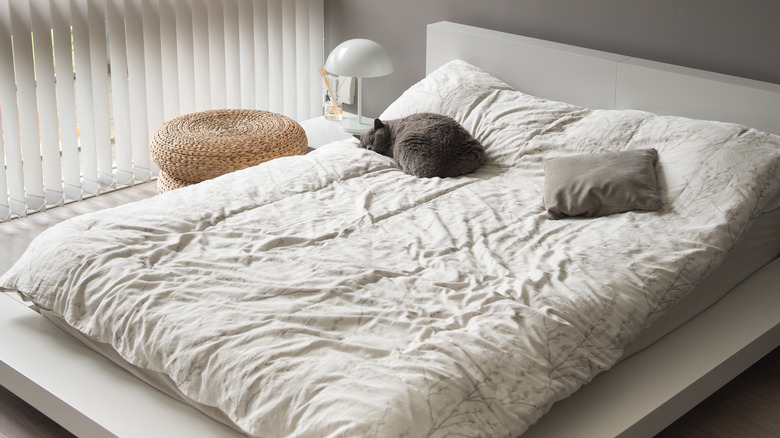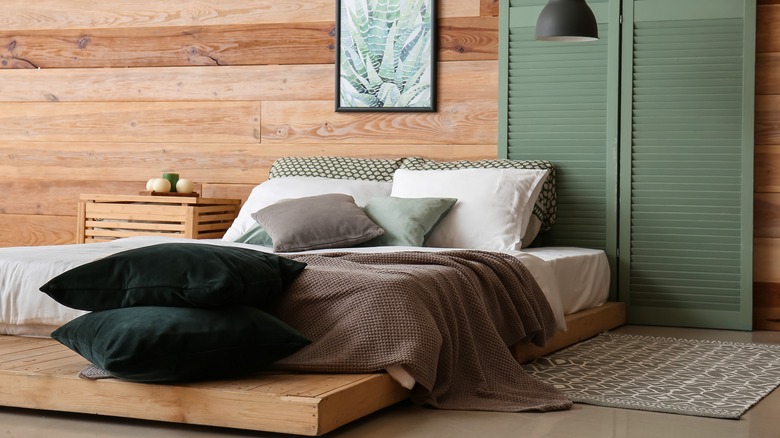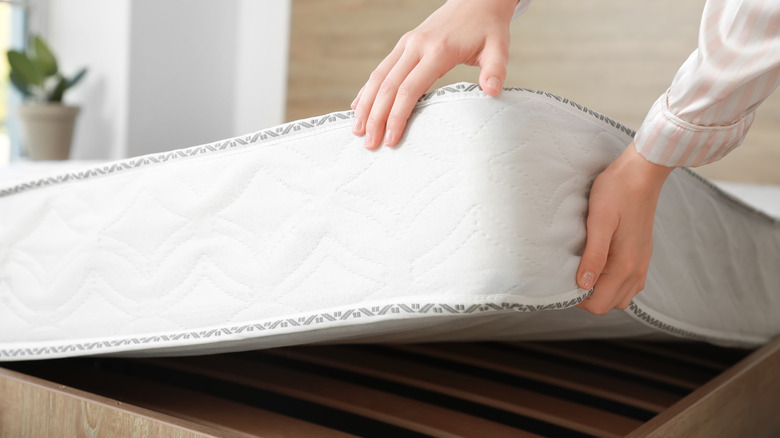Why You Should Think Twice Before Floating Your Bed
Floating beds are a great way to add an otherworldly, magical illusion to your bedroom. As modern style and minimalist aesthetics continue to dominate home trends, this barely-there bed frame has taken the world by storm. According to Google Trends data, searches for floating beds have seen a rise in popularity over the past few years, and clever builders and DIY enthusiasts have taken it upon themselves to reveal the secret behind the illusion and how to achieve it yourself.
Before making any major upgrades to your bed, though, it's important to consider critically if they'll work for you and your lifestyle. We spend a major chunk of our time sleeping, so prioritizing style over comfort may just leave you cranky and in need of coffee above all else. Floating beds are no exception to this rule, and there are important structural and organizational factors to assess if you're planning on incorporating this modern trend into your bedroom.
How do they work?
"Floating bed" is used to describe a few different kinds of bed frames, but all give the illusion that the bed is floating in mid-air. The most common variety is a small platform that acts as the bed's support instead of traditional legs. The mattress overhangs enough that the frame isn't visible from eye level, and it creates that trademark magical look. Another option is similar to a floating shelf. The bed's headboard is secured to the wall, and the rest of the frame actually hovers above the ground. This is a more involved installation process, but if you really want your bed to "float," it's the only way to have it completely off the ground.
Before you jump the gun and invest in this popular trend (via Google Trends), consider if the investment is the right choice for you. Floating frames can be a pricey upgrade, and it's always better to do some research before making a major decision.
What to consider
Many people opt for a floating bed to help save space in a small room, and with the average studio apartment coming in at only 514 square feet, people are increasingly having to budget the room they have available (via Flex). This can cause some issues, however, if you were planning to use the space under your bed for storage. Floating frames need empty space to pull off the illusion, so investing in one can actually decrease the amount of storage space you have available.
Another major consideration is weight limits. Beds are built to support weight, so it's not like your frame will topple as soon as you sit on it, but traditional bed frames have legs along the corners to evenly distribute weight and prevent flipping. The type of frames that are attached to the wall are even more of an issue when it comes to weight. Properly mounting the bed to studs can keep it secure, but incorrect installation can leave you with a ton of damage.


